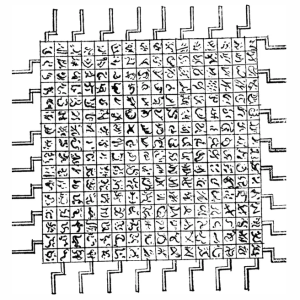“The Game of Life”

The Game of Life image from Wikipedia.
By Scott Hamilton
I made an interesting discovery over the weekend while playing a board game with my grandchildren. It might seem strange to say you discovered something while playing a board game, but the game was the “Game of Life.” I did not realize that the “Game of Life” has been updated several times throughout the history of the game, based on changes in life-style, economy and society. I grew up playing the “vintage” game from 1981, and did not even know until research today that it was not the original.
For a little history on the game, it was first published in 1860 by Milton Bradley as “The Checkered Game of Life.” It was the first game for the company and simulated the life of an individual from early adulthood to retirement. Along the path you meet various challenges in life from attending college, buying homes and land, getting married, having children, etc. As the times changed the game changed, but the first major change was not for 100 years, when the modern versions of the game first appeared.
In 1960 the game was rethought and took on its modern form. Players travel along the board over the mountains and valleys of life making decisions along the way. The decisions didn’t always work in your favor in this early version of the game. For example you may decide to get married, and not to have children, but the choice not to have children didn’t mean a child would not come. As the path branched there were more spaces which resulted in childbirth on one path and only one on the other. The game was designed for the “car” to carry the then average American family of eight. The game was originally designed with a strong moral message that showed when bad choices were made bad things happened in life, but the game also had some realism in that bad things could also happen on the right path.
I never saw any of the older game boards from the 1960s but I know two major changes, the 1960s game had money ranging from $500 to $50,000 bills, that were meant to represent annual salaries and expenses. In the 1981 release, they got rid of the $500 bill and added a $100,000 bill to make the salary ranges closer to reality. There was also an increase in the costs of buying homes, car repairs, marriage and birth. I found it interesting to see how the game industry wanted to keep the game relevant by making necessary changes for it to feel realistic to the next generation.
As I played the latest version with my grandchildren I noticed some significant changes, some of which made me question if our society is heading down a bad path. The first of those changes was the addition of “friend” spaces. These are spaces on the game board where friends join you for your life journey; of course we all have some of those lifelong friends, but only in recent generations have those friends begun to establish homes together and live as partners for life. These spaces on the game board showed a change in society’s acceptance of these relationships, which is in my opinion a good thing.
The second major change I found on the game board was when it came to growing one’s family. In the 1981 edition if you chose the path to grow your family you were not guaranteed to have a child, it just increased the likelihood that you would land on a “baby” space. In the latest release you immediately gain a child on making the decision to grow your family. I also think this was a positive change to the game as our society has become more open to different options for growing a family, such as adoption, so it has added more realism to the game.
The third major change was that in the 1981 version of the game there were “baby” spaces outside the path for growing a family, which meant that you could wind up having a child that was not planned. I think removing this space removed some of the realism from the game, but what saddens me a little is that it also means that our society has grown more comfortable with ending a pregnancy out of convenience. I’m not saying by any means that the game is promoting this, but it has definitely shown that in the game you have a clear choice to grow your family or not. I can say that I enjoyed the older version of the game more as it seemed more challenging to have less control over the events in life than the modern version that gives the player that extra level of control.
I know this article is out of the norm as it does not really cover technology, but it gives strong insight into our society through the lens of a board game. If you are interested in studying more on societal changes, the name of the science is Sociology and it has been the main focus of this article. I also must say that it is the first time I have written anything from that area of science. I hope you all enjoyed it. Until next week, stay safe and learn something new.
Scott Hamilton is an Expert in Emerging Technologies at ATOS and can be reached with questions and comments via email to shamilton@techshepherd.org or through his website at https://www.techshepherd.org.






